Menu
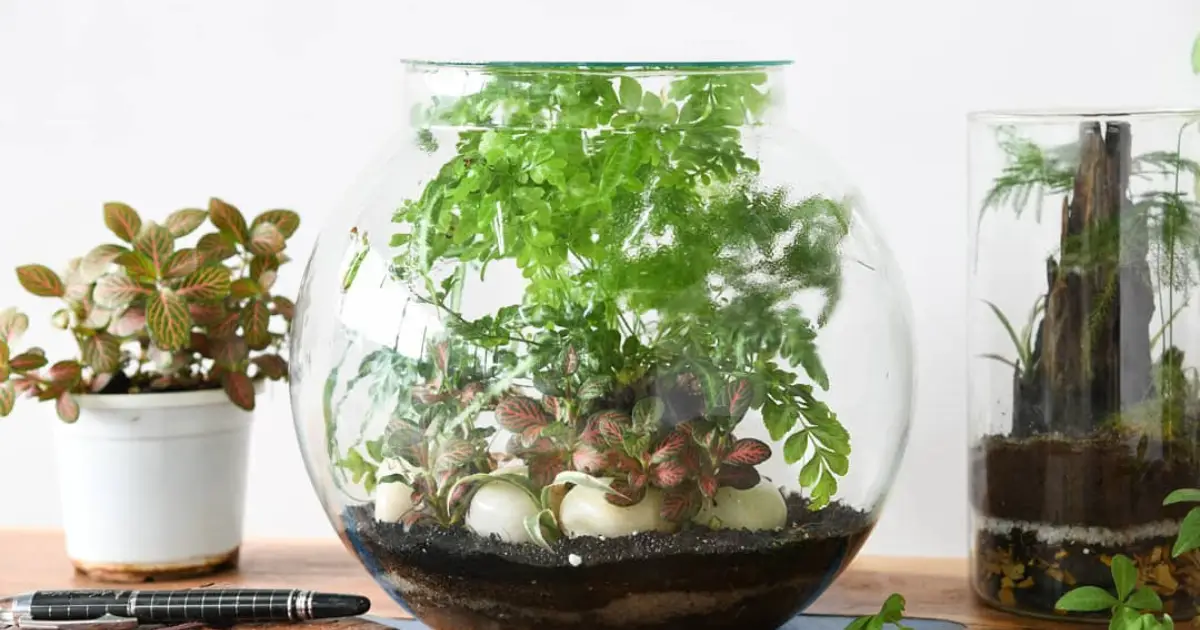
Top 5 Trimming Tips for a Healthy and Beautiful Closed Terrarium
Creating a thriving closed terrarium requires more than just the right plants and conditions. Proper trimming is essential to maintaining a healthy and visually appealing mini-ecosystem. In this blog post, we’ll share the top 5 trimming tips for a closed terrarium, ensuring your plants remain vibrant and well-maintained. With these expert tips, you’ll enhance the beauty of your terrarium and keep it in optimal condition, especially suited to the diverse climates across India.
1. Understand the Growth Patterns
Why It Matters:
Different plants have unique growth patterns, and understanding these is crucial for effective trimming. Some plants grow quickly and can quickly overtake others, while others grow slowly and may need more time to fill out.
Tip:
Before trimming, familiarize yourself with the growth habits of the plants in your closed terrarium. For instance, mosses typically spread and need regular trimming to prevent them from becoming too dense. On the other hand, succulents may need less frequent trimming but should be monitored for any signs of leggy growth or overexpansion.
How to Apply:
– Monitor Regularly and Keep an eye on plant growth to determine when trimming is necessary.
– Trim as Needed and Remove excess growth to maintain balance and prevent overcrowding.
2. Use the Right Tools
Why It Matters:
Using appropriate tools ensures precise and clean cuts, minimizing plant stress and promoting healthy regrowth.
Tip:
Invest in quality pruning shears or small scissors designed for delicate tasks. For closed terrariums, where access might be limited, choose tools with narrow blades that allow you to reach tight spaces without disturbing surrounding plants.
How to Apply:
– Keep Tools Clean and Disinfect your tools before and after use to prevent the spread of disease.
– Make Clean Cuts and Avoid crushing or tearing plant tissues by making clean, sharp cuts.
3. Trim for Health and Shape
Why It Matters:
Regular trimming promotes plant health by removing dead or diseased parts and ensures that the terrarium maintains its desired shape and aesthetic.
Tip:
Focus on removing dead or yellowing leaves, as these can attract pests and lead to fungal problems. Also, trim back any overgrown stems or branches to maintain a balanced and aesthetically pleasing arrangement.
How to Apply:
– Remove Dead Material and Cut away any dead or diseased plant parts to prevent the spread of issues.
– Shape Your Plants and Trim to maintain the desired shape and size, ensuring no plant overshadows others.

4. Maintain Proper Ventilation
Why It Matters:
Adequate ventilation helps control humidity and reduces the risk of mold and mildew, which can be exacerbated by excessive moisture in a closed terrarium.
Tip:
Regular trimming helps improve airflow within the terrarium, reducing the likelihood of fungal growth and maintaining a healthier environment for your plants.
How to Apply:
– Trim for Airflow and Ensure that trimmed plants are not crowding the terrarium’s walls or lid, which can restrict airflow.
– Monitor Humidity and Adjust the ventilation by occasionally opening the terrarium’s lid to allow fresh air circulation.
5. Trim with Seasonal Changes in Mind
Why It Matters:
Different seasons affect plant growth rates and needs. Adjusting your trimming routine based on the season ensures that your terrarium remains healthy and beautiful year-round.
Tip:
In warmer months, plants often grow more quickly, requiring more frequent trimming. In cooler months, growth may slow down, so trimming can be less frequent.
How to Apply:
– Seasonal Adjustments: Increase trimming frequency during the growing season (spring and summer) and reduce it during the dormant period (fall and winter).
– Observe Plant Behavior: Pay attention to how plants respond to seasonal changes and adjust your trimming routine accordingly.
FAQs About Trimming Your Closed Terrarium
1. How often should I trim my closed terrarium?
The frequency of trimming depends on plant growth rates. Typically, check your terrarium every 1-2 months for trimming needs. During the growing season, you may need to trim more often.
2. Can I trim my plants too much?
Yes, excessive trimming can stress plants and affect their health. Aim to remove only the necessary amount of growth to maintain balance and shape.
3. What should I do with the trimmed plant material?
Discard the trimmed material properly. Avoid leaving it in the terrarium, as it can decay and contribute to mold growth.
4. How do I know if my terrarium plants need trimming?
Look for signs of overcrowding, dead or yellowing leaves, and plants that are growing too large or blocking others. These are indicators that trimming is needed.
5. Can I use regular scissors for trimming my terrarium plants?
While regular scissors can be used, it’s best to use specialized pruning shears or small scissors designed for delicate plant work. This ensures cleaner cuts and reduces plant stress.
Conclusion
Mastering the art of trimming is essential for maintaining a healthy and beautiful closed terrarium. By understanding plant growth patterns, using the right tools, and adjusting your routine for seasonal changes, you can ensure your terrarium remains a thriving mini-ecosystem. Explore our terrarium shop online for a range of self-sustaining closed terrariums and essential supplies to keep your indoor garden in top shape.
Checkout our Latest Products
-
-10%
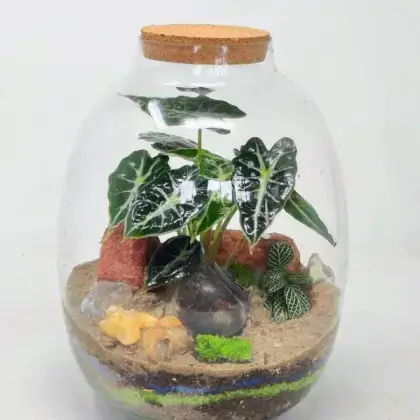 This product has multiple variants. The options may be chosen on the product page
This product has multiple variants. The options may be chosen on the product page10″ Oakley Closed Terrarium
₹2,500.00Original price was: ₹2,500.00.₹2,250.00Current price is: ₹2,250.00. -
-10%
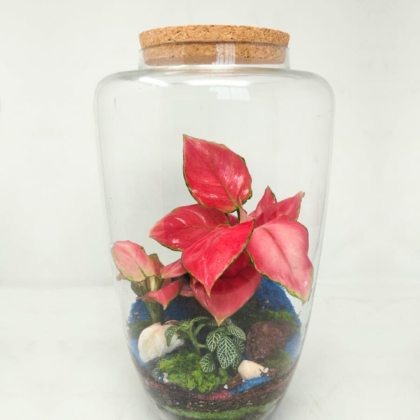 This product has multiple variants. The options may be chosen on the product page
This product has multiple variants. The options may be chosen on the product page14″ Arcadia Closed Terrarium
₹3,500.00Original price was: ₹3,500.00.₹3,150.00Current price is: ₹3,150.00. -
-10%
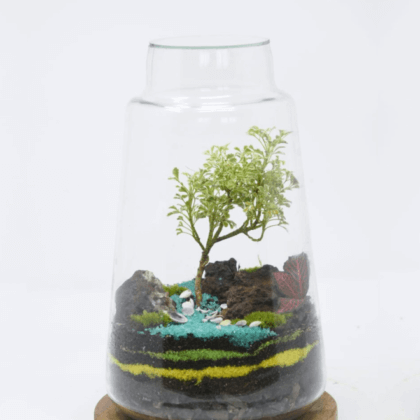 This product has multiple variants. The options may be chosen on the product page
This product has multiple variants. The options may be chosen on the product page10″ Cone Closed Terrarium
₹2,500.00Original price was: ₹2,500.00.₹2,250.00Current price is: ₹2,250.00. -
-10%
 This product has multiple variants. The options may be chosen on the product page
This product has multiple variants. The options may be chosen on the product page10″ Pop-up Jar Closed Terrarium
₹1,700.00Original price was: ₹1,700.00.₹1,530.00Current price is: ₹1,530.00. -
-10%
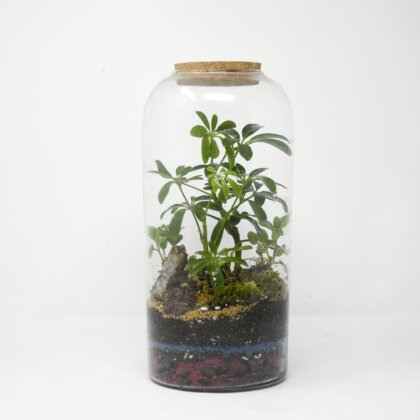 This product has multiple variants. The options may be chosen on the product page
This product has multiple variants. The options may be chosen on the product page11″ Papaya Jar Closed Terrarium
₹2,500.00Original price was: ₹2,500.00.₹2,250.00Current price is: ₹2,250.00. -
-10%
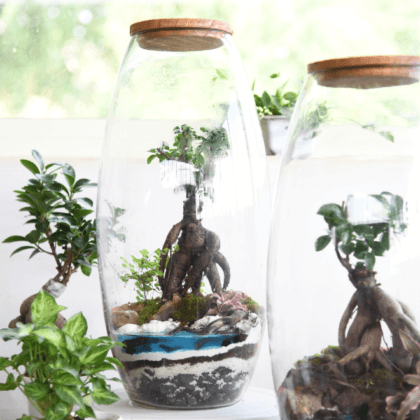 This product has multiple variants. The options may be chosen on the product page
This product has multiple variants. The options may be chosen on the product page19″ Dome Closed Terrarium
₹5,500.00Original price was: ₹5,500.00.₹4,950.00Current price is: ₹4,950.00. -
-10%
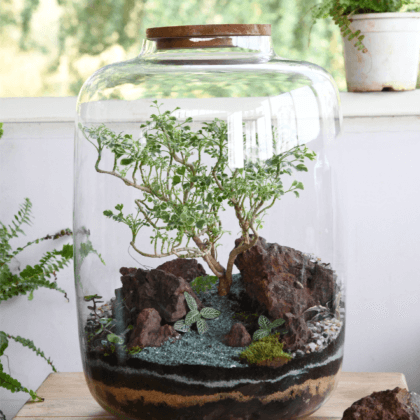 This product has multiple variants. The options may be chosen on the product page
This product has multiple variants. The options may be chosen on the product page15″ Amazonia Closed Terrarium
₹7,000.00Original price was: ₹7,000.00.₹6,300.00Current price is: ₹6,300.00.




